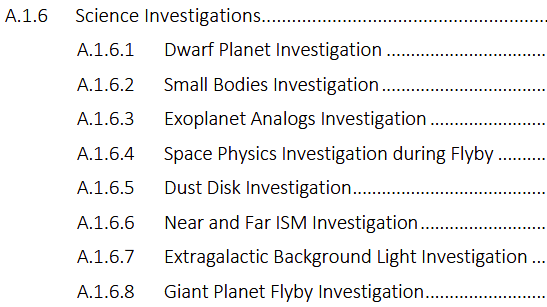dv said:
The Interstellar Heliosphere Probe program is a proposed mission involving two probes (IHP1, IHP2) to the characterise the nature of the heliosphere boundaries in as yet unexplored regions: the direct “nose” and “tail” of the sphere. This will add to the data provided by the Voyager and Probes probes and New Horizons. (Pioneer 10 was heading towards the tail but contact was lost some 20 years ago).
The probes would launch via China’s heaviest lifter, which is the Long March 5, and would run on radioisotope thermoelectric generators.
They would each use an Earth-Earth-Jupiter flyby pattern to pick up speed, but IHP-2 would also do a Neptune flyby with a close pass of Triton. This would only be the second time a probe has visited Neptune, following Voyager 2’s flyby in 1989.
Although the primary mission is heliosphere characterisation, there may visits to trans-Neptunian objects, depending on timing. IHP1 may be well aligned to visit Quaoar, which is about as distant as Pluto, approximately half the diameter.
https://www.scientificamerican.com/article/u-s-and-chinese-scientists-propose-bold-new-missions-beyond-the-solar-system/
https://www.issibern.ch/wp-content/uploads/2021/03/Taikong20.pdf
> Called the Interstellar Probe, this notional spacecraft … Last month, at the Fall Meeting of the American Geophysical Union (AGU) in New Orleans, the APL team unveiled the mission concept report
I missed this! Thanks for bringing it to my attention.
https://interstellarprobe.jhuapl.edu/Interstellar-Probe-MCR.pdf

Unfortunate name for principal investigator? Or appropriate.



Damn, no camera. This is starting to look like an advanced version of Helios. https://en.wikipedia.org/wiki/Helios_(spacecraft)
No, there has to be a camera. Look further. Camera instruments called IRM and VIR?

> The flyby to the dwarf planet … Repeat imaging with parallax offset is necessary for deriving the 3D topography and terrain models … Around closest approach, imaging at the planet’s terminator will reveal topography through the low-Sun-angle images. Spatial resolutions would range from 80 to 500 m/pixel
Nice
> After operating for 50 years, Interstellar Probe will continue into interstellar space. It will take approximately another 92.5 years to reach 1000 au
Something to look forward to. Is that about the distance to the inner edge of the Oort Cloud?
> Heliosheath Phase (90–120 au). The heliosheath phase in the augmented mission is similar to this phase in the baseline mission from an operational perspective. During this phase, specific activities, such as look-back circumsolar dust disk imaging.
Yes please.
> To visit both the dwarf planets Quaoar (42 au) and Gonggong (92 au) with an angular separation of ~7° in the mid-2030s, an untenable 4.1 km/s of velocity change would be required. Thus, we anticipate that Interstellar Probe could only fly by one planetary target.
Dang.
I see, the VIR camera is classed as an optional extra.
The Solar System Lookback Camera is also classed as an optional extra.
And IRM.
> There were a range of cameras to choose from. One could fly a visible-near-infrared imager (VIR), which would enable observations of planetary surface features, distant planets and TNOs, and the cosmic background, as well as sensing of the ISM in this wavelength band.
> An interstellar probe would also be able to observe the diffuse red-shifted light emitted by the universe beyond the dominant zodiacal cloud foreground that obfuscates such studies when performed within our heliosphere. To examine this, a visible-infrared spectral mapper (IRM) with
two wavelength ranges of 0.5–15 μm and 30–100 μm would complement the payload.

